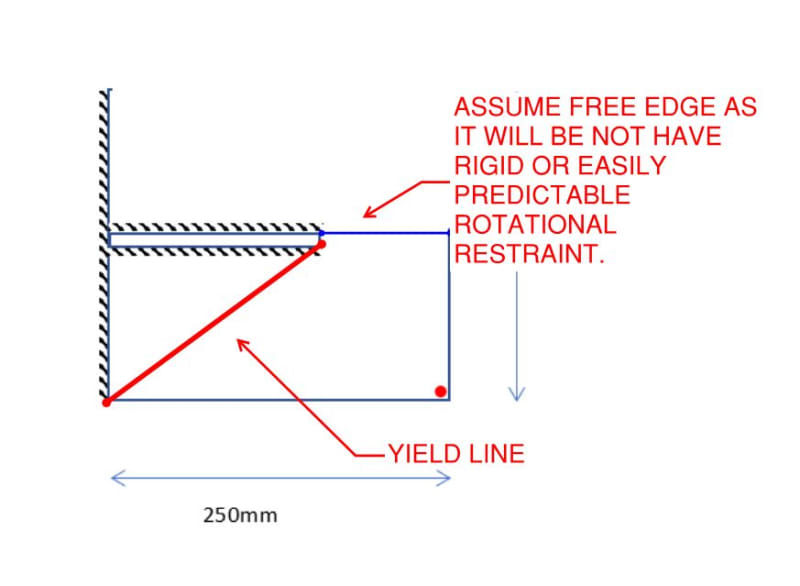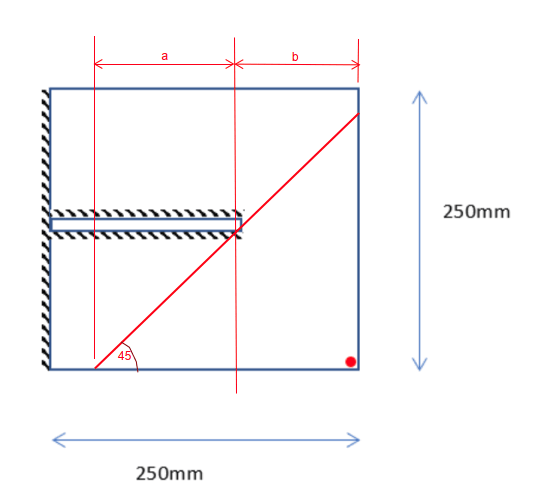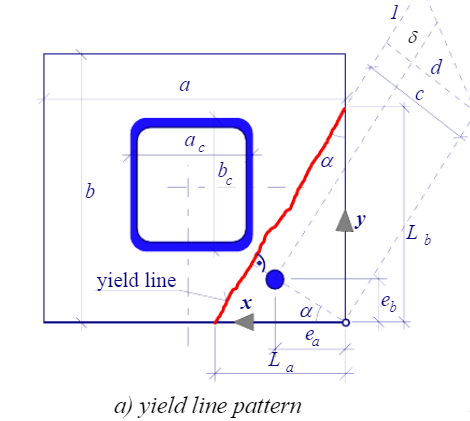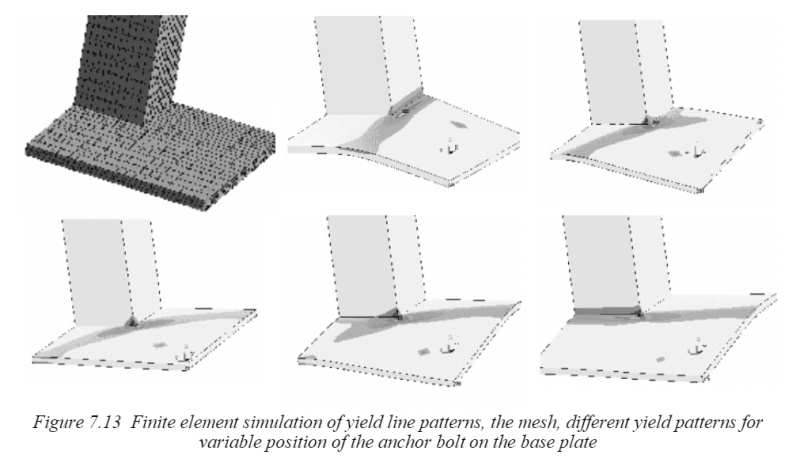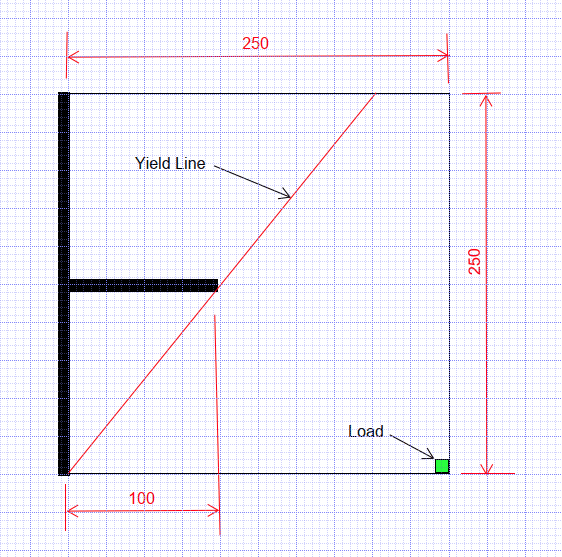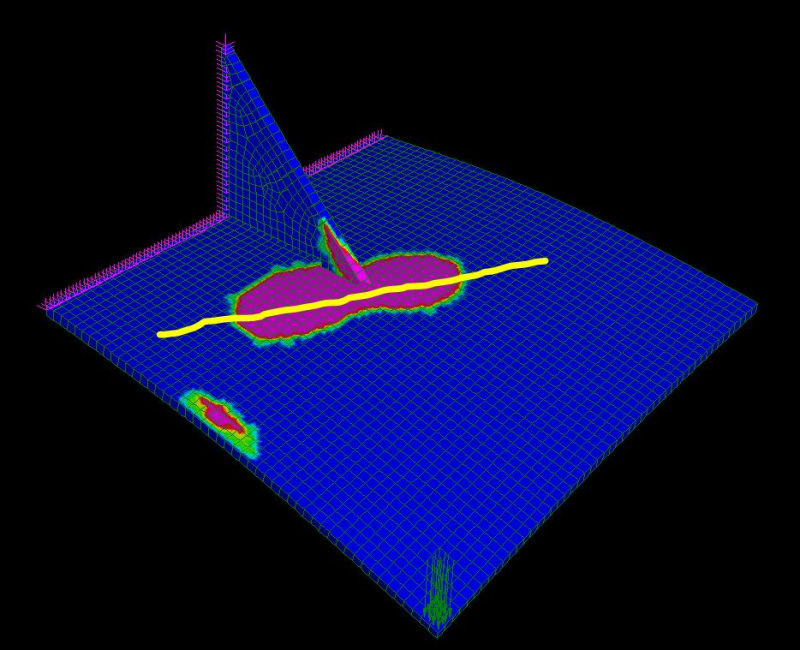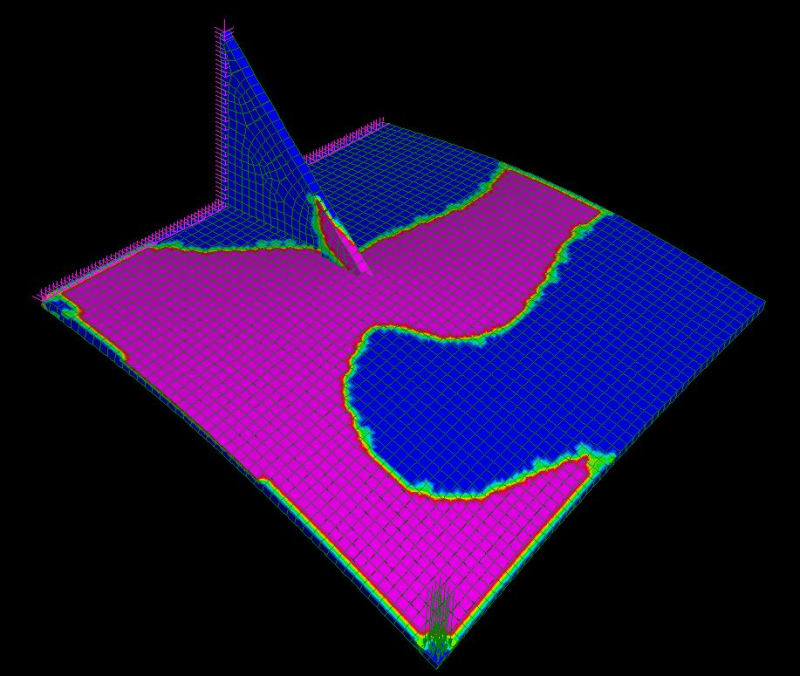TheLizard
Structural
- Mar 5, 2021
- 1
Good afternoon engineers
I have a built up plate connection with a point load on one corner potentially.
I have tried to analyse elastically with a 10mm strip to the stiffener but this requires a very thick plate.
Normally I would extend the stiffener to the edge but the client has stated there is a clash.
Please can you advise on a suitable yield line?
Your thoughts are greatly appreciated
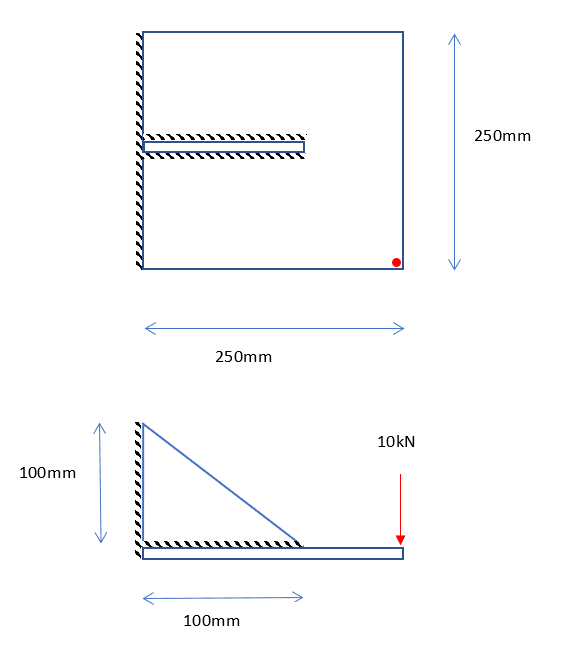
I have a built up plate connection with a point load on one corner potentially.
I have tried to analyse elastically with a 10mm strip to the stiffener but this requires a very thick plate.
Normally I would extend the stiffener to the edge but the client has stated there is a clash.
Please can you advise on a suitable yield line?
Your thoughts are greatly appreciated


